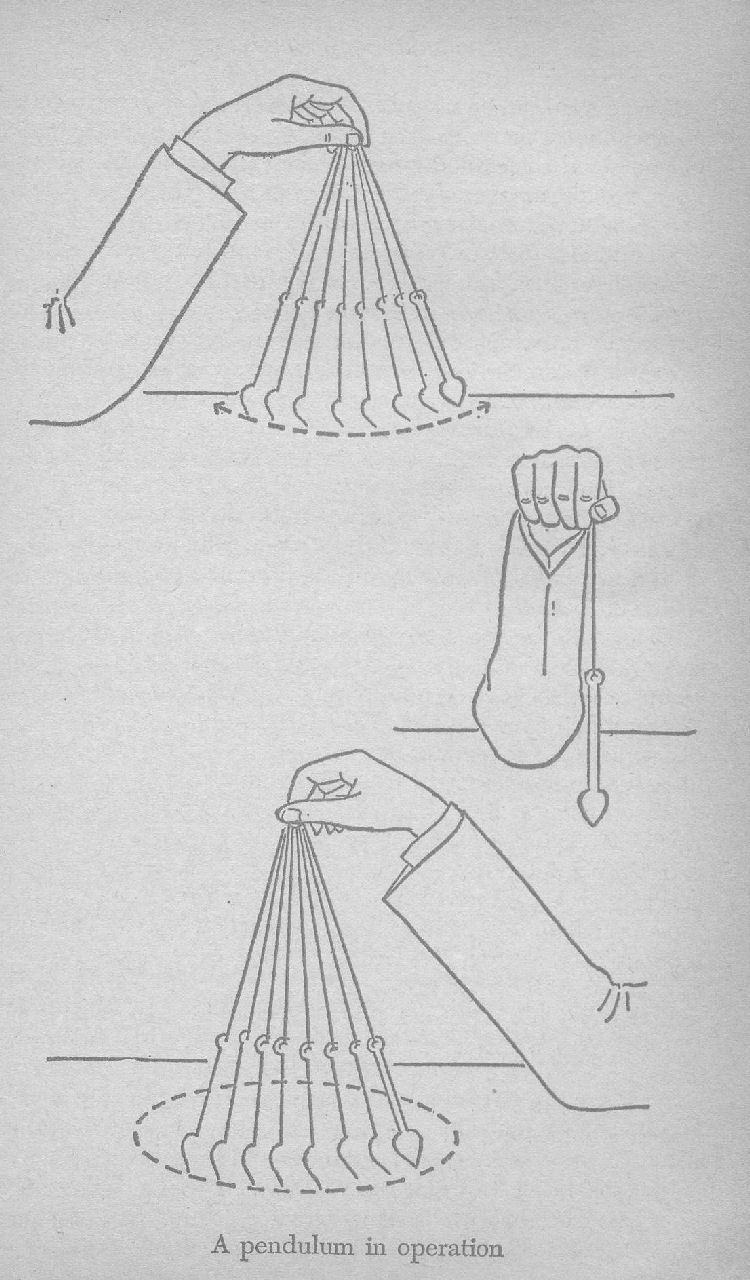Category Archives: RADIESTHESIA AND OTHER PHENOMENA
13.1. THE EXPLORATORY PENDULUM
13.1. THE EXPLORATORY PENDULUM
******************************
This device can be traced back to a form of divination called coscinomancy, that utilized a crude sieve or strainer, which two persons held suspended between their fingertips. In lieu of a handle, the strainer was gripped by a pair of pincers, this clamp being the portion balanced between the fingers.
Due to the uneven pressure, the suspended strainer had a tendency to turn, but the holders did their best to maintain its equilibrium, while names of other people were recited aloud. The name on which the strainer turned, indicated the person involved in some crime, or whatever else the sieve was being used to test. Almost always, it was something bad.
Other similar devices were utilized for such purposes, but the real refinement came in divination by a key, called cleidomancy. One person held the key suspended by a thread, and if the key began to revolve, any question was answered in the affirmative. Working along the same line, a finger ring could be used instead of a key; and modern experimenters found a small ball even better.
13. RADIESTHESIA AND OTHER PHENOMENA
13. RADIESTHESIA AND OTHER PHENOMENA
************************************
One remarkable form of divination that has continued through the centuries is that of the “divining rod,” which is still used for finding underground streams of water. Some authorities have tried to link the modern art of “dowsing,” as it is sometimes termed, with the ancient science of Rhabdomancy, or divination by use of wands, but while the two have points in common, they apparently differ somewhat in purpose.
DIVINING FOR METALS
In fact, when the divining rod emerged from obscurity during the early 1500’s, it was used for locating mines. A forked stick was cut from a tree, preferably the hazel, which was small and frequently grew in terrain where minerals might be found. The rod was gripped by the forked ends, one in each fist, with the fingers above and pointed toward the body, so that the stem of the rod extended forward and upward.
The diviner then walked about, often muttering incantations, until the stem of the wand began to dip. That was the place where the miners were supposed to dig, and the fact that they often found veins of precious metal brought fame to the diving rod and fortune to the diviners. Naturally, the odds favored those diviners who knew the sort of ground where ore was most likely to be found; but that still did not explain the action of the rod, which often thrust itself downward so forcibly that the forks were known to break in the diviner’s hands.







